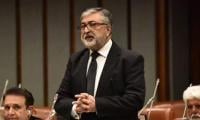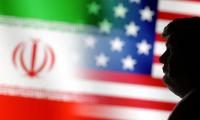Iranian President Hassan Rouhani, a centrist, was re-elected last Saturday (May 20), to a second term by winning 57 percent of the votes in an election that had a high turnout of about 70 percent. He defeated his hard-line rival, Ebrahim Raisi, who had the backing of the allied security forces and the ruling clergy.
This landslide victory, which Rouhani did not get in his first term, should help his pursuit of domestic reforms, continued engagement with the West and build-up of the nuclear deal that he and his cabinet clinched through negotiations with the world powers. The deal constrains Tehran’s nuclear programme in exchange for international sanctions relief.
The economy will be on top of Rouhani’s second-term agenda because despite the easing of sanctions, economic benefits have yet to touch the daily lives of average Iranians. Unemployment remains high among the youth even though oil exports have rebounded and inflation is back at single-digits.
Rouhani will likely face domestic challenges in implementing his reformist agenda. Although victory has tilted the political balance towards reformists in the short term, Raisi secured a vote tally high enough to remain politically relevant. His success in winning hard-liners’ support could put him in a good position to run in 2021 when Rouhani will not be eligible for another term.
A Raisi-supporter cleric warned Rouhani that he should not forget that “more than 16 million people did not vote for him. So he should respect their right to criticise him”. Raisi may also be favoured as a possible successor to the 77-year-old Supreme Leader Ayatollah Khomeini, who holds the position for life. Rouhani’s domestic and foreign policy reforms will be anything but a cake-walk.
On the foreign policy front, unless there’s a fundamental change in Iran-US relations, the weight of continued US unilateral sanctions regime will remain a major obstacle in the way of much needed foreign investment which the sanctions make complicated or illegal.
The nature of the relationship will determine geo-political realities. At a press conference in Riyadh last week, US Secretary of State Rex Tillerson said that the focal point of President Trump’s visit to Saudi Arabia was to minimise Iranian- backed terrorism threat in the region.
Interestingly, Tillerson appeared to keep the door open by saying Trump might eventually talk to Rouhani as he has never “shut off the phone to anybody who wants to have a productive conversation”. However, Trump’s speech in Riyadh on May 21 reflected no such flexibility.
Addressing 55 Muslim leaders, President Trump identified Iran as an autocratic state and seemed close to calling for regime change, despite the Iranian presidential election – generally regarded as fair – only a couple of days previously. Denouncing Hezbollah, he put the US squarely on the side of Sunnis against the Shias in the devastating sectarian proxy war in the region. Could this be a ‘Trump Doctrine’ for the Middle East? If so, it is bound to widen divisions and escalate tensions without doing anything for peace.
In Saudi Arabia, Trump also emphasised the importance of finding a solution to the years-long civil war in Yemen, where Saudi Arabia supports the government while Tehran backs the rebel Houthi group. The question is: Can there be conflict resolution in the Middle East without involving Iran?
The US would do well to remember its own post 9/11 role in strengthening Iran’s regional position by dislodging the anti-Iran Taliban in 2001, doing away with Saddam Hussain in 2003 and then arming and training hundreds of fighters belonging to Shia militias in Iraq with ties to Iran. These were unintended consequences of short-sighted American foreign policy choices for sure, but were very real nonetheless.
With Rouhani back in power, Trump and his team should work towards a less rigid approach that can minimise long-term mutual distrust. The Iranian leader has promised to work towards removing the remaining non-nuclear sanctions, but critics argue that it will not be easy with Trump repeatedly describing the deal as “one of the worst ever signed”.
The complexity of the issue was reflected in the Trump administration’s re-authorisation of waivers from sanctions targeting Iran’s oil exports this week and then imposing new sanctions on four entities and three individuals connected with Iran’s ballistic-missile programme.
The Iran nuclear deal showed that Iranians are open to negotiated settlement of disputes. The US must avoid exacerbating regional tensions in the Muslim world and appeasing Israel by openly taking sides. This will only strengthen the hands of the hardliners in Iran.
It is obvious that the majority of Iranians do not wish to live in isolation and would rather engage with the world as a responsible nation. They must not be pushed back into the arms of the ‘Death to America’ chanting fanatics.
Given Iran’s complex government system, Rouhani will likely face the same challenges that checked his efforts towards delivering social transformation in his first term. But a larger mandate means more public support. Women in particular turned up to vote for Rouhani in great numbers as they felt their personal freedoms were under threat from Raisi whose supporters frequently accused the president of abandoning Islamic values. As if Islam starts and finishes with what a woman wears.
As a woman who has lived in Iran for some years in the mid-1990s, this writer has first-hand experience of complete strangers chiding you for ‘inappropriate hijab’. “Khanum! Hijab-e-toon durast neest”, they would say, just because a few strands of hair had managed to escape the ‘rooseri’ (scarf).
It may seem like a frivolous observation to the orthodox but for any woman with an independent soul such state-sanctioned restrictions are a violation of her privacy and self-respect. At the end of the day it is the symbolism that counts.
So many years down the line, there appears to be some relief. Watching the election coverage, it was heartening to see fully-covered Iranian women standing next to young ladies who were wearing scarves but whose beautiful strands flew freely in the air. Both sides appeared to be under less pressure to adhere to the strict code.
Let us hope that is truly the case and that Rouhani’s reformist agenda will succeed in both the economic and social arenas as well as in his foreign policy approach. A tough call perhaps, but one that can succeed with continued domestic and international support.
The writer is senior research fellow at the Strategic Vision Institute (SVI),
Islamabad.
Email: talatfarooq11@gmail.com
On April 2, India tabled bill in Lok Sabha, proposing sweeping changes to management of Waqf properties
Trump had even imposed tariffs on uninhabited Heard and McDonald Islands near Antarctica
Some would say this is the call of fate when time comes back to haunt and when blushes are visible
Actions of ICE are sweeping and have targeted not only int'l students holding visas but also green card holders
According to Trump, US is earning $2 billion per day in newly-introduced trade tariffs
Negligible contribution of e-commerce underscores persistent reluctance towards digital adoption







